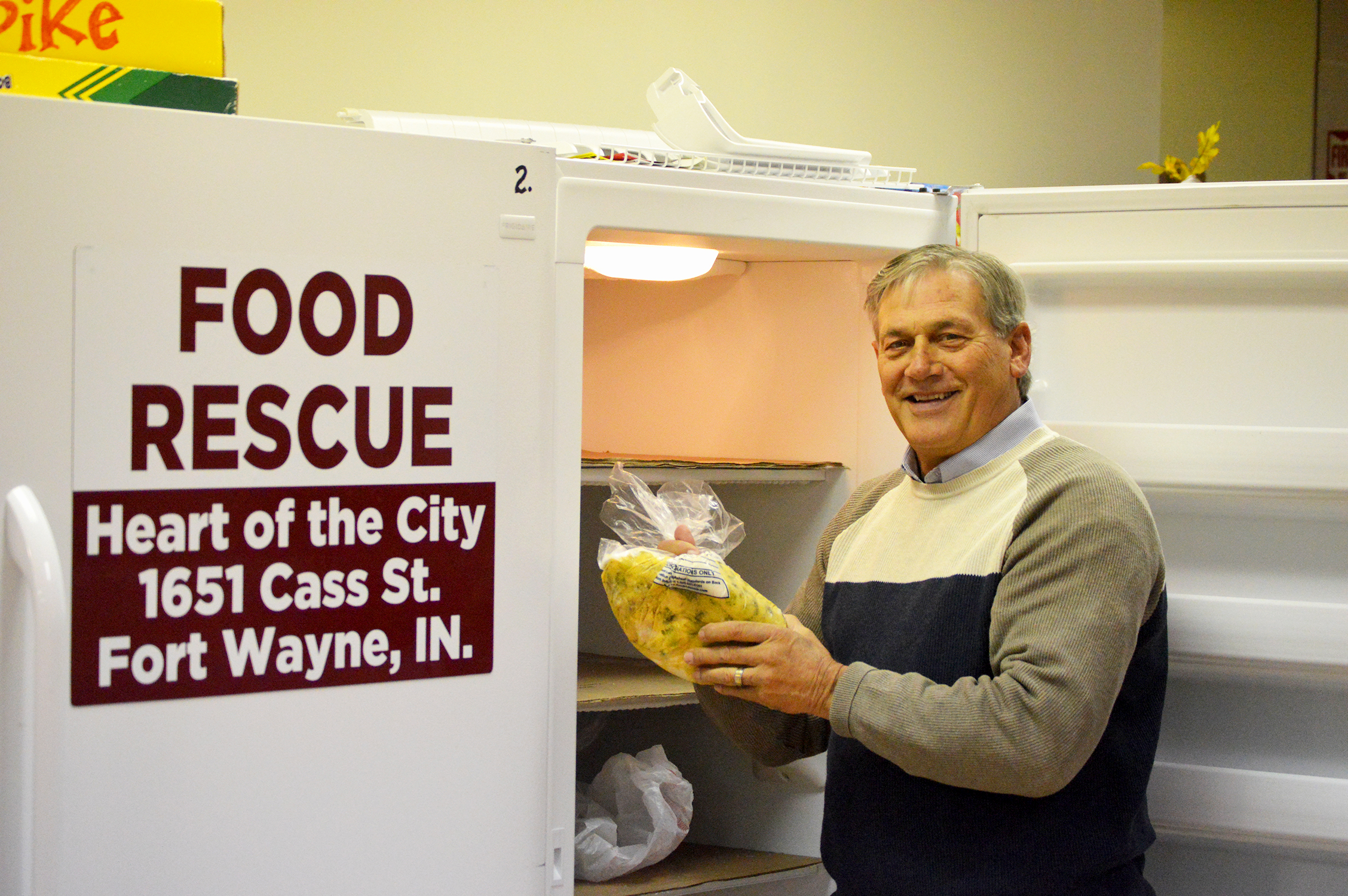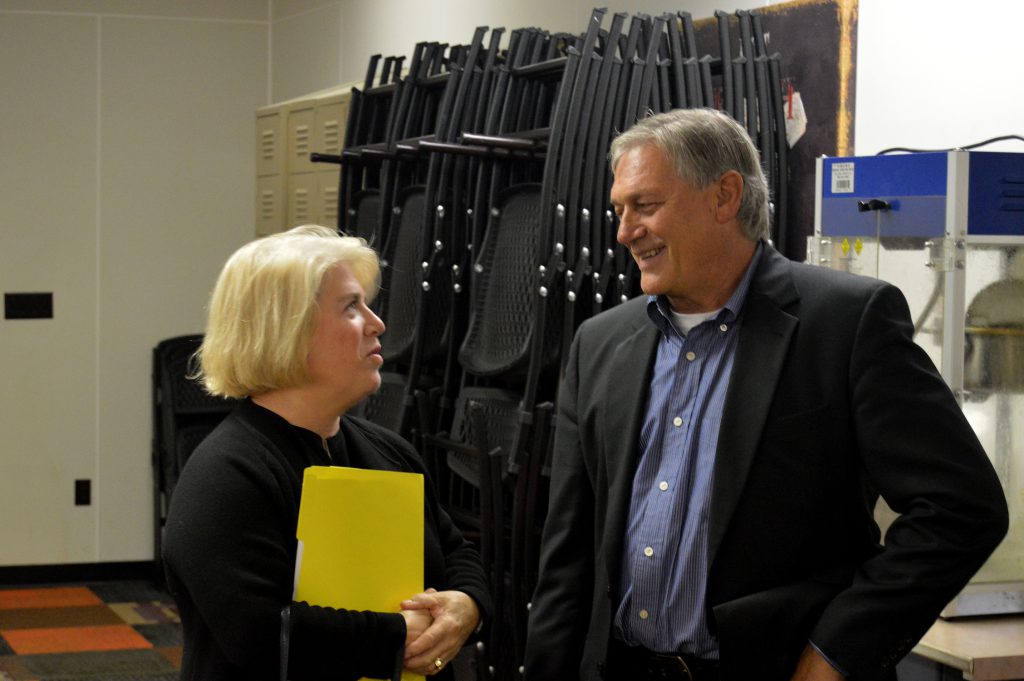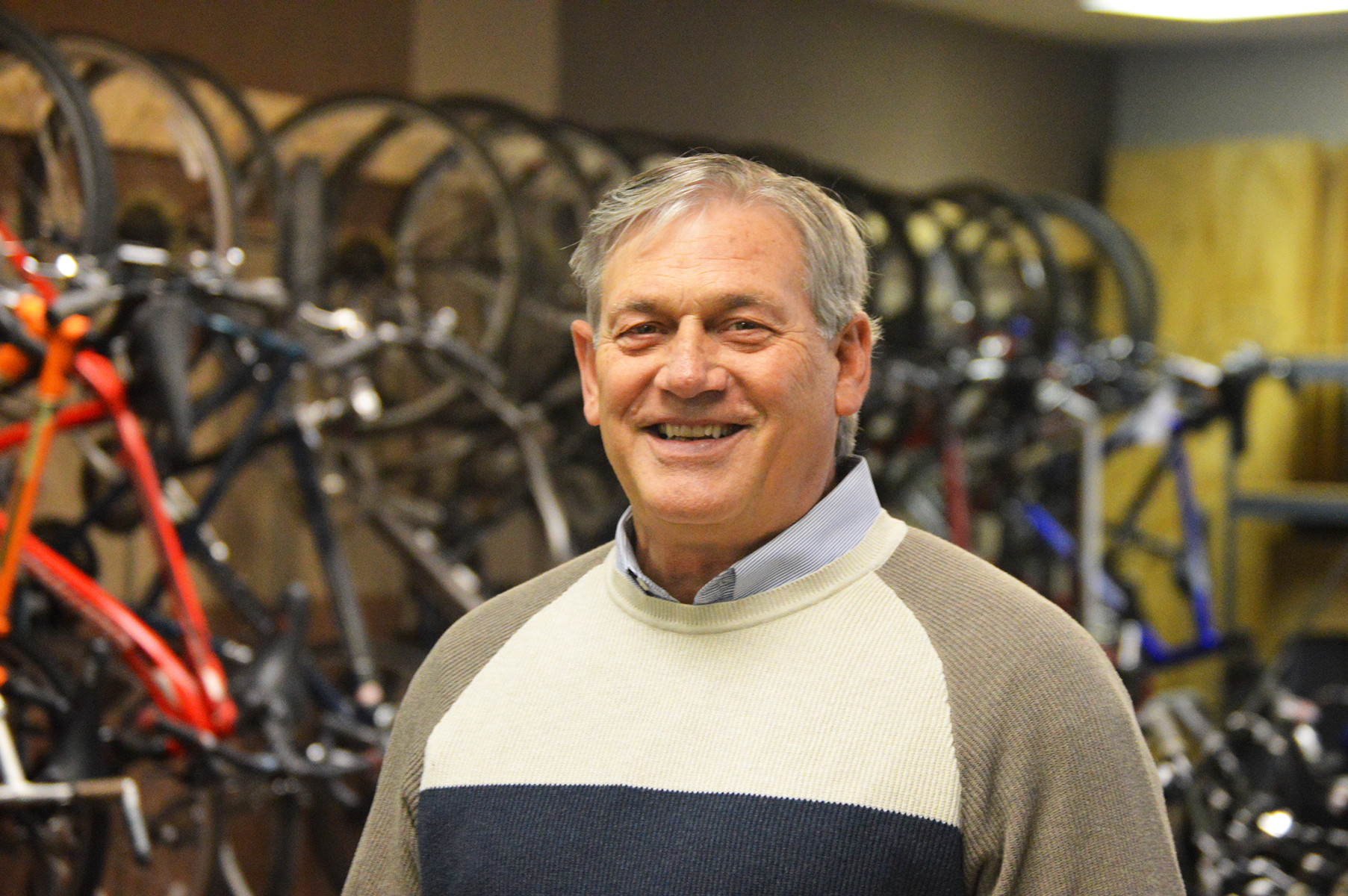2020 Rosenberger Award Given to Tim Stauffer

Tim Stauffer knows what it’s like to go to bed hungry.
“My dad was a pastor, and I grew up poor,” he says. “I went to bed without eating supper many times.”
The hunger ceased when a neighbor learned that he had no food. She bought the family a bag full of groceries.
He never forgot that day, and the gratefulness he felt has followed Stauffer throughout life. He wanted others to feel that kind of neighborly love. So, he became the giver, striving to feed people physically and spiritually.
Now Stauffer is the pastor of Mission Church, as well as chairman of the board for Heart of the City Mission Foundation.
The nonprofit Heart of the City Mission Foundation, established in 2010, is an umbrella agency for several programs serving underprivileged families. Much of the focus is on providing food, mentoring, education, and music lessons for financially disadvantaged youth. Still, about 25 percent of the foundation’s programs—a food pantry, free laundry facilities, and the earn-a-bike program—also benefit low-income and homeless adults.
Mission Church, a quaint sanctuary housed on the same Pearl Street campus, is managed independently from Heart of the City. Yet, it was the church that launched what has become a massive assembly of outreach in the core of Fort Wayne, touching hundreds of families each year.
Nearly two decades ago Stauffer and his wife, Karen, were simply visiting the church. Stauffer’s uncle stood in the pulpit, pastoring a small congregation of mostly grandmothers and their grandchildren. But weary from declining health, the uncle asked Tim Stauffer to preach in his stead that day. As the story goes, Stauffer never left.

Immediately, the Stauffers noticed their members’ practical needs. They were low-income. They came to church hungry. The Stauffers, who manage a financial planning firm, used their own money to provide breakfast snacks and drinks before service.
As the congregation grew, they looked for alternative ways to fund the costly meals. Karen had an idea. A friend of hers worked at Starbucks. Soon the company routinely donated leftover pastries and other goods to the church, rather than throwing them away at night.
Over the years, the Stauffers asked the same question to various companies, expanding donations and opportunities to feed people. Now they could fill the church’s existing food pantry and take food to transitional housing shelters and trailer park neighborhoods.
“We go out on Tuesday nights and knock on doors in the trailer park,” Stauffer says. “Hi, we have some food from Panera, Starbucks, and KFC,” volunteers tell residents. “Would you like some?”
At Christmastime last year, about 55 Heart of the City volunteers walked through neighborhoods, praying and handing out food and coats to more than 200 people. The goal is to build relationships, to let people know that others care. Today, the organization’s effort to distribute leftover food is called the Food Rescue program.
Years ago, the Stauffers realized they couldn’t do all the work alone—but they couldn’t resist giving either. “That was my background,” Stauffer says, “just having generosity and benevolence as a part of your being.”
They solicited volunteers to transport the food from restaurants to Heart of the City. Today, Food Rescue feeds about 200 individuals (50 households) each week. Grants from local agencies, including the St. Joseph Community Health Foundation, help fund their $30,000 annual expenses. The foundation contributed 10,000 last year to help pay expenses for a transport vehicle and a refrigerator and freezer to store food between pickup and distribution.
“The amount of food that is wasted in a day in a city like Fort Wayne is just incredible,” Stauffer says. “There is not a food shortage problem,” he says. “There is a food distribution problem.”
Other programs expanded Heart of the City’s reach and begged for a larger building. In 2013, with the help of the city, the foundation and Mission Church moved to a 15,000-square-foot building on Pearl Street. With the building came more space for an expanded bike program to serve the homeless, as well as youth tutoring, mentoring, and music lessons.
Stauffer, a father, beams when he talks about the kids who flourished at Heart of the City. “We have over 20 kids that have graduated from college or are in college right now,” he says. Several refer to Tim and Karen Stauffer as “mom and dad.”
One of them, he walked down the wedding aisle not long ago, then performed the marriage ceremony.
Another is Stacey Brittsan. Today, she’s a 23-year-old Purdue University graduate who lives in Lafayette, Indiana. She works as a plant healthcare specialist. Years ago, she was living with her two big sisters and a single mother who was chronically ill and unable to work. Her father died when she was eight.
“We relied on food banks and food stamps, and that wasn’t enough,” she recalls.

Her aunt would take Stacey and her sisters to Mission Church, and the girls began participating in Heart of the City programs. Through donations, she says, “We were at least able to supplement what we had, so we could at least not go to bed hungry.”
Stacey walked or rode her bike to Heart of the City once or twice a week for tutoring, summer activities, and music lessons (she played several instruments). The combined impact on her life was invaluable.
“(The Stauffers) have been great, steady mentors throughout my life,” she says, adding that they often ushered her toward the right path.
Without them, she says, “I wouldn’t have been able to break the generational poverty that I have. I wouldn’t have been able to turn away from other solutions that everybody else in the neighborhood did.”
The food, school supplies, and clothing Heart of the City provided helped her dodge other temptations, such as drugs and unhealthy companions. “I didn’t have to try to find a way to make money.”
Sadly, not all youth he encounters have happy endings, Tim Stauffer says. Still, he keeps trying. One goal, he says, is to “stop generational poverty, one life at a time.”
“I went to bed without eating supper many times, until the neighbor lady found out one day… Fifty years later, that (scenario) lived out in my life,” he says, remembering Brittsan and her sisters. “What somebody did when I was eight years old, that impacted me to do something for someone else. I hope that those girls have the same spirit when I’m long gone.”
His hopes are being realized. Brittsan has a passion for local missions and community outreach. “I’m super involved in my church here and I’m involved in the community—that’s what (the Stauffers) taught me.”
Recent Stories
- Merry Christmas from the St. Joseph Community Health Foundation!
- St. Joe Foundation awards $2,652,998 to local agencies serving vulnerable individuals in Allen County, IN
- Prenatal & Infant Care Luncheon: a year of connection and learning
- Nourishing bodies and spirits: the impact of the Society of St. Vincent de Paul food and nutrition program
- Supporting sustainability in local food networks to improve access to nutritious food
